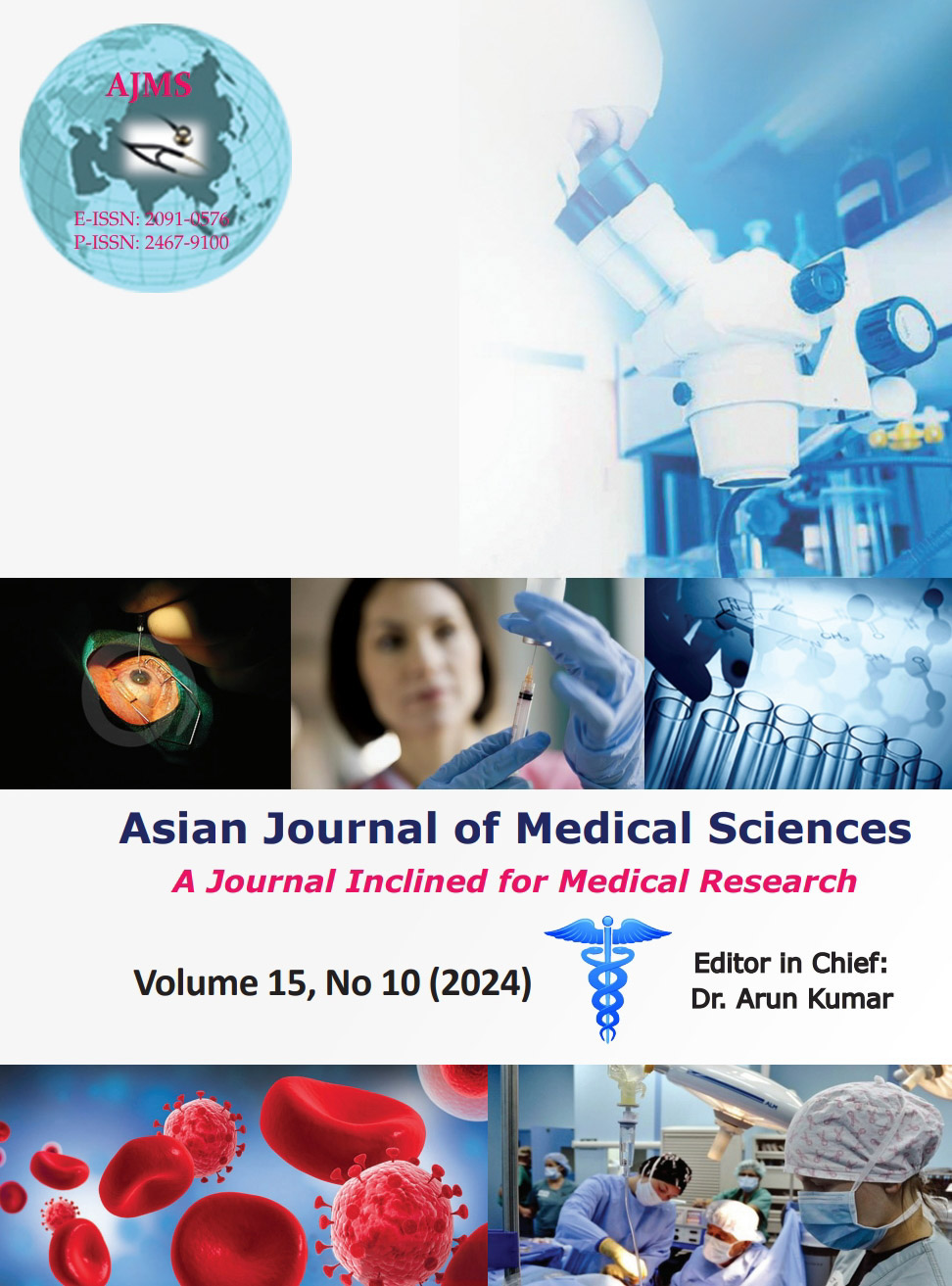Study of etiology, clinical profile, and outcome of altered sensorium patients admitted in a tertiary care hospital
Keywords:
Altered sensorium; Etiology; Clinical profile; OutcomeAbstract
Background: Altered sensorium is one of the most common presentations in patients coming to the emergency room. It includes decreased level of consciousness, attention disorder, arousal disorder, and cognitive disorder. The causes of altered sensorium can be varied, some of which are cerebrovascular diseases, alcoholism, cerebral trauma, hypoglycemia, epilepsy, drug intoxication, and neuroinfection. 4–10% of the patients presenting to the emergency department may have altered mental status. The outcome is dependent on early identification and effective treatment using investigations and imaging technologies, and it might range from full recovery to permanent damage to death.
Aims and Objectives: (1) To study clinical profile and etiology in altered sensorium patients. (2) To assess outcomes in altered sensorium patients.
Materials and Methods: In this prospective cross-sectional study, clinical examination and investigations are done and data are collected using pro forma for patients fulfilling the inclusion criteria. In this study, all altered sensorium patients were evaluated by detailed history, clinical examination, Glasgow Coma Scale (GCS), laboratory investigations, computed tomography brain, and other investigations. All patients were followed up till discharge or death of the patient in the hospital.
Results: There were 270 patients who presented with encephalopathy, 184 (68%) were males. The majority of these patients 60 (22.2%) were in the age group of 51–60 years old. The most common cause is neurological in 109 (40.3%) patients, metabolic in 64 (24%) patients, and sepsis in 50 (19%) patients. Ischemic stroke 83 (76%) is the most common neurological cause. Hepatic encephalopathy was the most common cause of metabolic encephalopathy present in 21 (32%) patients. Pneumonia was the most common infection. There were 114 (42.2%) deaths. Septic encephalopathy is the most common cause of mortality. Early presentation to the hospital, higher GCS, and conscious level at presentation were good prognostic markers of outcome in patients, while septic encephalopathy was found to have the worst prognosis.
Conclusion: The common etiologies of encephalopathy are neurological followed by metabolic and sepsis. Early presentation to the emergency room within 6 h of symptom onset, higher GCS, neurological and metabolic causes are associated with a good prognosis. The mortality rate was 42.2%. Septic encephalopathy is the most common cause of death with pneumonia being the most common source of infection.
Downloads
Downloads
Published
How to Cite
Issue
Section
License
Copyright (c) 2024 Asian Journal of Medical Sciences

This work is licensed under a Creative Commons Attribution-NonCommercial 4.0 International License.
Authors who publish with this journal agree to the following terms:
- The journal holds copyright and publishes the work under a Creative Commons CC-BY-NC license that permits use, distribution and reprduction in any medium, provided the original work is properly cited and is not used for commercial purposes. The journal should be recognised as the original publisher of this work.
- Authors are able to enter into separate, additional contractual arrangements for the non-exclusive distribution of the journal's published version of the work (e.g., post it to an institutional repository or publish it in a book), with an acknowledgement of its initial publication in this journal.
- Authors are permitted and encouraged to post their work online (e.g., in institutional repositories or on their website) prior to and during the submission process, as it can lead to productive exchanges, as well as earlier and greater citation of published work (See The Effect of Open Access).




